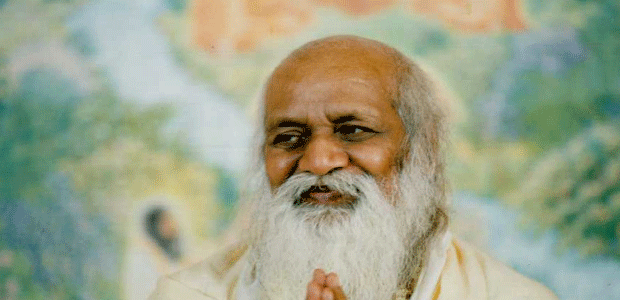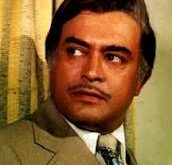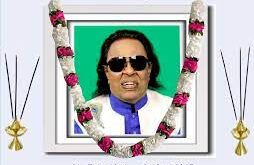 Life Achivments work Audio-Video Publication
Life Achivments work Audio-Video Publication
The Maharishi wrote more than twenty books on the Transcendental Meditation technique and Maharishi Vedic Science.
The Beacon Light of the Himalayas
In 1955, the organisers of the Great Spiritual Development Conference of Kerala published The Beacon Light of the Himalayas, a transcribed 170-page “souvenir” of the conference. Authors Chryssides, Humes and Forsthoefel, Miller, and Russel cite this as the Maharishi’s first published book on Transcendental Meditation, although Transcendental Meditation is not mentioned in the text of the book.The book is dedicated to Maharshi Bala Brahmachari Mahesh Yogi Rajaram by his devotees of Kerala and contains photographs, letters and lectures by numerous authors which appear in various languages such as English, Hindi and
Science of Being and Art of Living
In 1963, the Maharishi audiotaped the text of the book Science of Being and Art of Living, which was later transcribed and published in fifteen languages.K.T. Weidmann describes the book as the Maharishi’s fundamental philosophical treatise, one in which its author provides an illustration of the ancient Vedic traditions of India in terms that can be easily interpreted and understood by the scientific thinking of the western world. In the Science of Being, the Maharishi illustrates the concepts of relative existence as the experience of everyday reality through one’s senses, and absolute reality as the origin of being, and the source of all creative intelligence. The Maharishi describes this absolute reality, or Being, as unchanging, omnipresent, and eternal. He also identifies it with bliss consciousness. The two aspects of reality, the relative and the absolute, are like an ocean with many waves.The waves represent the relative, and the ocean beneath is the foundation of everything, or Being. Establishing oneself in the field of Being, or unchanging reality, ensures stability.
In his Science of Being the Maharishi introduced an additional concept: that of fulfillment viewed as something to be obtained not through exertion or self effort, but through the progressive settling of the mind during the practice of TM. This was the first full systematic description of the principles underlying the Maharishi’s teachings.
Bhagavad-Gita: A New Translation and Commentary: 1967
In his 1967 publication, Bhagavad-Gita: A New Translation and Commentary, the Maharishi describes the Bhagavad Gita as “the Scripture of Yoga”. He says that “its purpose is to explain in theory and practice all that is needed to raise the consciousness of man to the highest possible level.”According to Peter Russell, the Bhagavad-Gita deals with the concept of loss of knowledge and subsequent revival, and this is brought out by the Maharishi himself in the introduction. In the Preface, the Maharishi writes: “The purpose of this commentary is to restore the fundamental truths of the Bhagavad-Gita and thus restore the significance of its teaching. If this teaching is followed, effectiveness in life will be achieved, men will be fulfilled on all levels and the historical need of the age will be fulfilled also.”
A second concept, that of freedom, presented as the antithesis of fear, is also prevalent in the book, according to Jack Forem. Forem states that in his interpretation of the Gita, the Maharishi expressed several times that as man gains greater awareness through the practice of Transcendental Meditation, he gradually establishes a level of contentment which remain increasingly grounded within him and in which the mind does not waver and is not affected by either attachment or fear.
The Maharishi was reported to be a vegetarian, an entrepreneur, a monk and “a spiritual man who sought a world stage from which to espouse the joys of inner happiness”.He was described as an abstemious man with tremendous energy who took a weekly day of silence while sleeping only two hours per night.He did not present himself as a guru or claim his teachings as his own. Instead he taught “in the name of his guru Brahmananda Saraswati” and paid tribute to him by placing a picture of Saraswati behind him when he spoke. He was on a mission to bring the ancient techniques of TM to the world.Scientist and futurist Buckminister Fuller spent two days with the Maharishi at a symposium at the University of Massachusetts in 1971 and said, “You could not meet with Maharishi without recognizing instantly his integrity.” Authors Douglas E. Cowan and David G. Bromley write that the Maharishi did not claim any “special divine revelation nor supernatural personal qualities”. Still others said he helped to “inspire the anti-materialism of the late 60s” and received good publicity because he “opposed drugs”.According to author Chryssides, “The Maharishi tended to emphasize the positive aspects of humanity, focusing on the good that exists in everyone.”
According to The Times the Maharishi attracted scepticism because of his involvement with wealthy celebrities, his business acumen, and his love of luxury, including touring in a Rolls-Royce.A reporter for The Economist calls this a “misconception” saying: “He did not use his money for sinister ends. He neither drank, nor smoked, nor took drugs. … He did not accumulate scores of Rolls-Royces, like Bhagwan Shree Rajneesh; his biggest self-indulgence was a helicopter. “When some observers questioned how his organisation’s money was being used, the Maharishi said, “It goes to support the centres, it does not go on me. I have nothing.”
He was often referred to as the “Giggling Guru” because of his habit of laughing during television interviews.[Diminutive at a little over five feet tall, the Maharishi often wore a traditional cotton or silk, white dhoti while carrying or wearing flowers. He often sat cross-legged on a deerskin and had a “grayish-white beard, mustache and long, dark, stringy hair”.Barry Miles described the Maharishi as having “liquid eyes, twinkling but inscrutable with the wisdom from the East”.Miles said the Maharishi in his seventies looked much younger than his age.He had a high pitched voice and in the words of Merv Griffin, “a long flowing beard and a distinctive, high pitched laugh that I loved to provoke”.
Biographer Paul Mason’s web site says that Swami Swaroopananda, one of three claimants to the title Shankaracharya of Jyotir Math, is “an outspoken critic” of the Maharishi. According to Swaroopananda, the Maharishi “was responsible for the controversy over Shankaracharyas” because he gave Shankarcharya Swami Shantanad encouragement and assistance in fighting the court case which challenged Shantanand’s inheritance of the title.In a review of the documentary film David Wants to Fly, Variety magazine reported Swaroopananda’s assertion that “as a member of the trader class” the Maharishi “has no right to give mantras or teach meditation”. According to religious scholar Cynthia Humes, enlightened individuals of any caste may “teach brahmavidya” and author Patricia Drake writes that “when Guru Dev was about to die he charged Maharishi with teaching laymen … to meditate”. Mason says Shantanand “publicly commended the practice of the Maharishi’s meditation” and sociologist J.R. Coplin says that Shantanand’s successor, Swami Vishnudevanand, also “speaks highly of the Maharishi”.
For more details about Maharishi Mahesh Yogi visit the more links….
1 2 3 4 5
 पौराणिक कथाओं, प्रेरक क्षण, मंदिरों, धर्मों, फिल्मों, हस्तियों के बारे में दिलचस्प जानकारी, हजारों गाने, भजन, आरती के बोल हैं Your wish may come true today…
पौराणिक कथाओं, प्रेरक क्षण, मंदिरों, धर्मों, फिल्मों, हस्तियों के बारे में दिलचस्प जानकारी, हजारों गाने, भजन, आरती के बोल हैं Your wish may come true today…



























